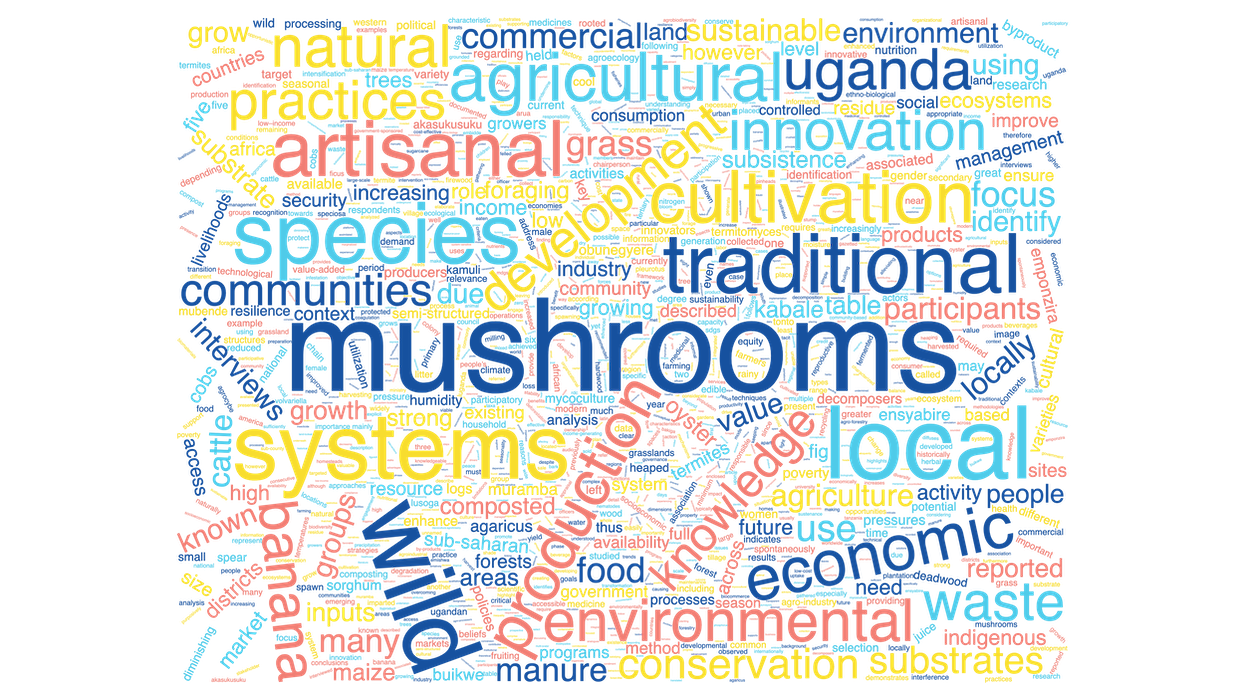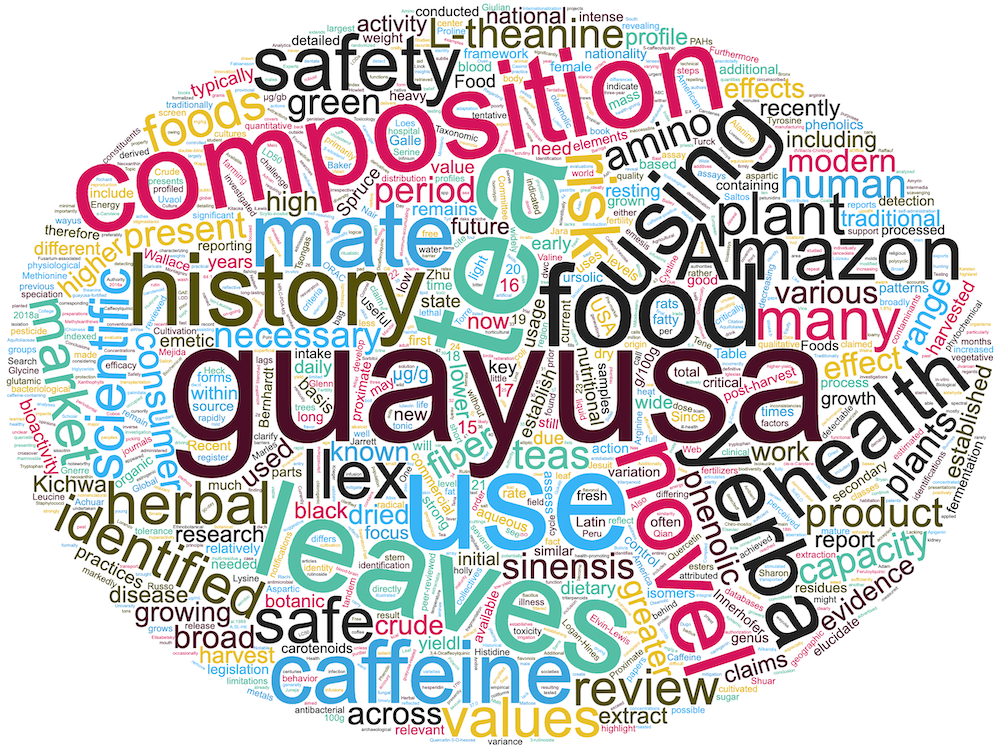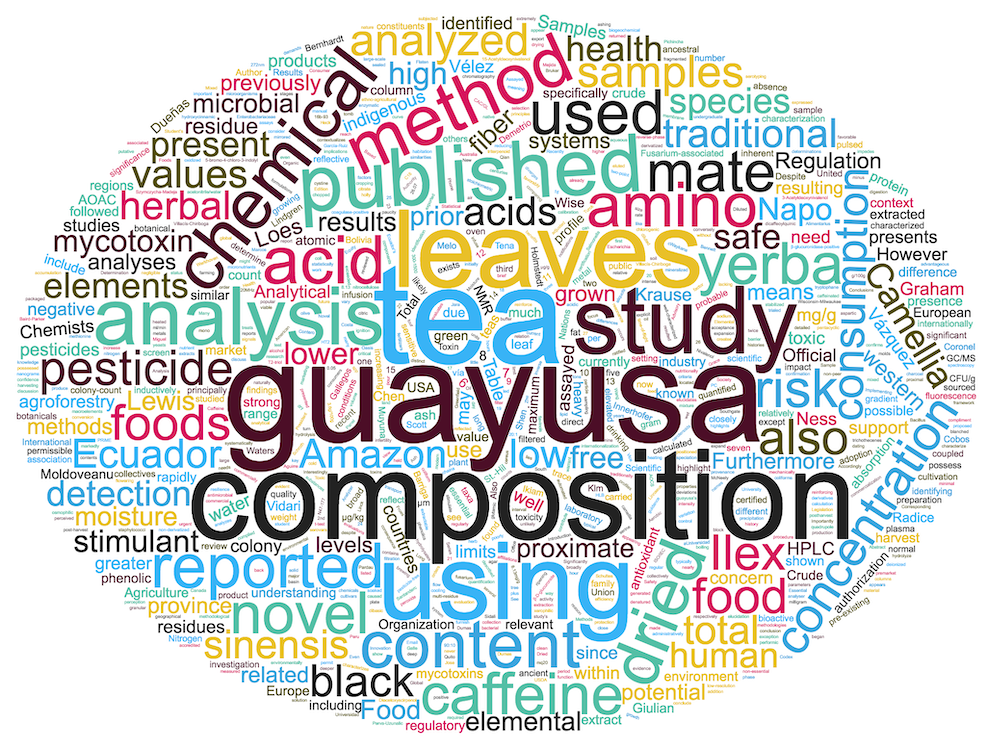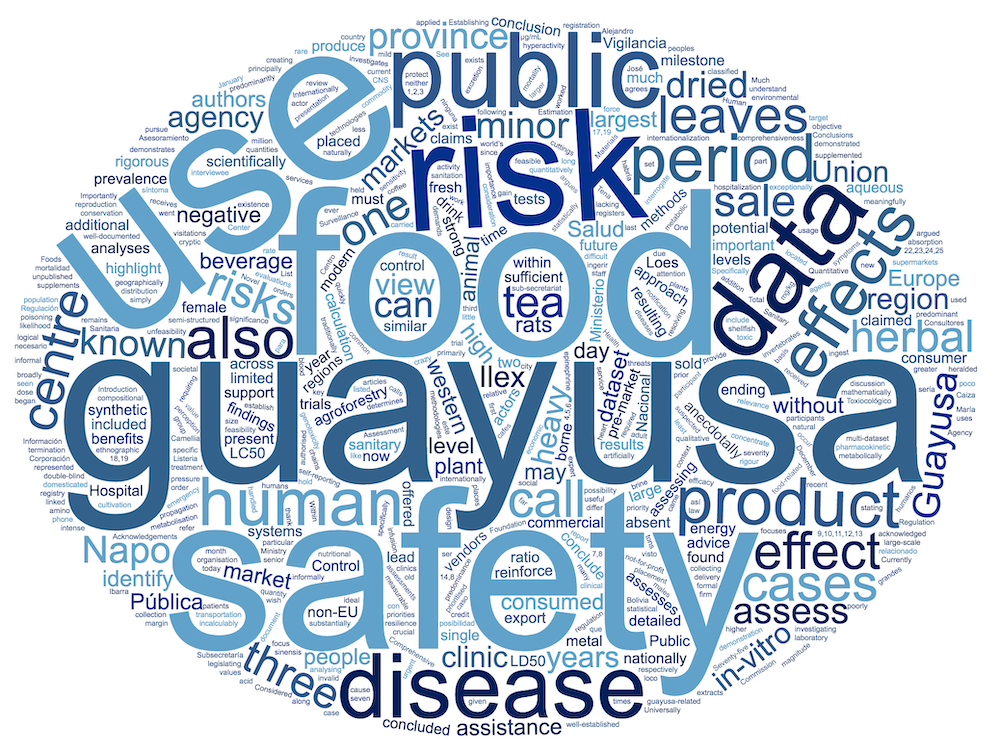Innovation
Research Interests
• Regional innovation
• Community entrepreneurship
• Novel foods
• Novel food regulations
• International value chains
• Indigenous entrepreneurship
• Entrepreneurship teaching
Recent Publications
Wendiro, D. and Wise, G. (2019). Identifying indigenous practices for cultivation of wild saprophytic mushrooms: responding to the need for sustainable utilization of natural resources. Journal of Ethnobiology and Ethnomedicine 15, 64. doi:10.1186/s13002-019-0342-z

Due to increasing pressure on natural resources, subsistence agriculture communities in Uganda and Sub-Saharan Africa are experiencing increasingly restricted access to diminishing natural resources that are a critical requirement of their livelihoods. Previously, common-pool resources like forests and grasslands have been either gazetted for conservation or leased for agriculture, the latter in particular for large-scale sugarcane production. Satisfying the increasing consumer demand for grassland or forestry products like wild mushrooms as food or medicine, requires innovative ethno-biological and industry development strategies to improve production capacity, while easing the pressure on diminishing natural resources and averting ecosystems degradation.
This case study addresses traditional knowledge systems for artisanal mycoculture to identify cultivation practices that enhance sustainable utilization of natural resources. Multi-scalar stakeholder engagement across government and community sectors identified artisanal mushroom producers across five districts in Uganda. Focus groups and semi-structured interviews characterized artisanal production methods and identified locally used substrates for cultivation of different mushroom species. Artisanal practices were characterized for the cultivation of six wild saprophytic mushroom species including Volvariella speciosa (akasukusuku), two Termitomyces sp. (obunegyere and another locally unnamed species), Agaricus sp. (ensyabire) and Agrocybe sp. (emponzira), and one exotic Pleurotus sp. (oyster) that are used as food or medicine.
Our description of artisanal mycoculture methods that respond to conservation and utilization pressures, demonstrates the value of addressing traditional knowledge to improve ethno-biology and mycoculture industry practice. Traditional communities engage in multiple technological and organizational innovations and practices for sustainability and in the case of mushroom production to conserve the environment and culture, ensure variety, food and nutrition security, and income. The results of this study present opportunities to preserve ecosystem quality while developing an artisanal mycoculture system. They have also identified aspects of artisanal mycoculture that most urgently require further ethno-biological study and industry development. Future research and industry development can utilize the result of this study to boost artisanal production of wild saprophytic mushrooms in Sub-Saharan countries, for food or medicinal consumption, and environment conservation. Further development of production efficiencies in context with sustainable natural resource management is recommended.
• go to publisher •
• download full text •
Wise, G. and Negrin, A. (2019). A critical review of the composition and history of safe use of guayusa: a stimulant and antioxidant novel food. Critical Reviews in Food Science and Nutrition, 59(15). doi:10.1080/10408398.2019.1643286

Due to rapid international market development, there is a strong and urgent need to assess the safety of the novel food, Ilex guayusa. Guayusa has been consumed for centuries in the western Amazon as an herbal tea, and novel food regulation provide a detailed framework for safety assessment of novel foods with such a history of use. This study reviews guayusa’s taxonomy, chemical composition, toxicology, ethnobotany, and history of safe use as key elements of a robust novel food safety assessment. Guayusa is a product of traditional agricultural systems with a continuous history of consumption in Ecuador. Its known chemical composition appears to pre- sent no greater risk to human health than existing teas such as green tea or yerba mate, although our understanding of guayusa’s chemical profile is still nascent, requiring further investigation. Broad consumption of guayusa is not associated with a history of adverse effects or product safety notifications. Biochemical and phytochemical studies have profiled its nutritional content, metabol- ite composition, and bioactivity, validating guayusa’s antioxidant and stimulant properties. In con- clusion, guayusa leaves have a well-documented chemical composition and history of safe use, which are key considerations for authorization as a novel food in the EU.
• go to publisher •
• download full text •
Wise, G. and Santander, D. E. (2018). Comparative composition analysis of the dried leaves of Ilex guayusa (Loes.). Journal of Food and Nutrition Research, 6(10). doi:10.12691/jfnr-6-10-4

Guayusa (Ilex guayusa Loes.) is a traditional herbal tea of western Amazon regions and an international commodity of increasing importance. Its consumption is rapidly increasing in the USA and Canada, and the authorization of guayusa extract as a novel food in Europe signals further market growth of this antioxidant and stimulant tea. There is an urgent need for a deeper understanding of the chemical composition of guayusa to support its risk assessment and safe consumption internationally as a novel food. Accordingly, this study characterizes the proximate composition of guayusa and elucidates caffeine, amino acid and elemental components. It also evaluates potential microbial, mycotoxin and pesticide residue contaminants. Guayusa’s moisture content, caffeine concentration, amino acid compliment and profile of nutrient and toxic elements including heavy metals present no greater risk to human health than consumption of tea or yerba mate. A low risk due to mycotoxin, bacterial or pesticide residue contamination is also established.
• go to publisher •
• download full text •
Wise, G., Santander, D. E. (2018). Assessing the history of safe use of guayusa. Journal of Food and Nutrition Research, 6(7): 471-475. doi:10.12691/jfnr-6-7-8

Guayusa (Ilex guayusa Loes.) is a herbal tea that has been consumed for centuries as a traditional food in western Amazon regions where it is now valued as an antioxidant and a stimulant agent. European Union novel food legislation permits traditional foods to be placed on the market if a history of safe use in a non-EU country can be established. This study investigates the safety of guayusa consumption, analysing provincial hospital admissions data; national disease register data; national toxicology agency call centre data; and national food safety authority data. We conclude that there is a history of safe use of guayusa in Ecuador. Establishing safe guayusa consumption is an important milestone for the authorisation of dried guayusa leaves as a novel food with claimed health benefits in Europe. Consequently, this study has significance for the international product development of guayusa as an antioxidant energy drink.
• go to publisher •
• download full text •
Wise, G. (2016). How Universities Drive Regional Innovation. Canberra, Australia: Department of Industry, Innovation and Science.

This case study tests whether a top-down state-driven development model can establish a university on principles of excellence, impact, and relevance. The creation of Ikiam is analysed qualitatively and the results are discussed in context with national and international policy settings for higher education and innovation. This study provides insights for low and middle-income countries to strengthen higher education and innovation systems through university creation. Internationally it provides practical insights for university master planning taskforces to build organisational strength and distinctiveness through excellence, impact and relevance.
• go to publisher •
• download full text •
Current Research
• An assessment of the role of fab labs as a component of Ecuador's innovation system.
• A case study on the impact of an experiential learning program on recycling awareness of undergraduates.
• A case study on the impact of an experiential learning program on recycling capability of undergraduates.
• A comprehensive review of guayusa as a stimulant and antioxidant novel food with a history of safe use.
• Guidance for the preparation of European Union novel food notifications based on traditional use in a third country.
• Composition and speciation of heavy metals in Ilex guayusa and guayusa tea, an emblematic product of the Ecuadorian Amazon.
• A comprehensive analysis of caffeine composition of Ilex guayusa leaves: consequences for horticulture and harvest period.
• Assessment of Ilex guayusa leaves for amino acids having putative neuropharmacological activity.
• An entrepreneurship bootcamp methodology that balances learning in the areas of research development and commercial development.
• Indigenous entrepreneurs' perspectives on dance as a form of cultural tourism associated with Amazon Kichwa culture.
• Redefining cultural tourism.